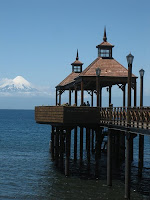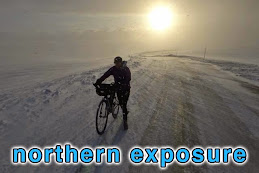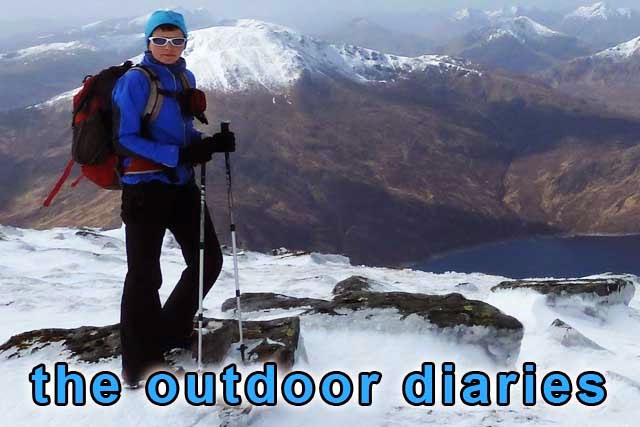Well, here I am back in Argentina - I just couldn´t stay away. My passage back was ably assisted by the Pino Hachado Pass and the relaxed immigration rules that allow the traveller to skip back and forth at will.
There are several reasons for coming back to Argentina. Having spoken to cyclists that have come the Chilean side of the Andes and those that have down the Argentinian side, the overwhelming impression I got was that the Argentinian side was much more interesting. And a couple of days cycling on Chile´s tedious Pan American Highway were enough to convince me. Secondly, everything is cheaper and yet better in Argentina, especially the groceries which are very important to the hungry cyclist! I´d no sooner crossed the border than I was able to pick up rice cakes, gluten-free pasta and rather yummy gluten-free lemon biscuits - they didn´t last long. But the main reason for coming back is that Argentina has made such a powerful impression on me. It´s really taken me by surpise - before I left I thought it might be one of the dullest countries of my trip. I don´t know what makes it so irresistable - the draw of the mountains, the beauty of the landscapes or the warmth of the people -but there is a touch of magic and an edge of excitement to Argentina.
Mind you, the last few days of pleasant cycling in the lush lakes and mountains of Chile did make me swither. The cycle over the 1864m Pino Hachado Pass really began several days earlier in Curacautin. It´s a pleasant enough small, rural town but I´ll remember it for my second flooding in the tent in Chile and a place where, quite alarmingly at the time, I couldn´t get any money out of the cash machine. But once the rain stopped, it was sunshine all the

way up a long, meandering valley of green farmland and forests, dotted with little settlements and dominated by the volcanoes Lliama and Lonquimay. I camped at several lovely spots in this valley. One afternoon, I asked a mechanic, busy in his roadside workshop, if there was a campsite nearby. He said that there wasn´t but that I could camp in his garden. It was a perfect little spot - a row of trees provided shade, pink roses were in bloom and chickens pecked around in the grass. As I was pitching the tent, the neighbour´s young children came over and asked, ever so politely, if there was anything they might do to help. I got them to ferry my kit between the bicycle and the tent!. Another idyllic campspot was on a peaceful little farm, tucked away high up in the mountains above the village of Lonquimay, itself tucked away high up in the mountains. It was surrounded by woodland and cleared pastures where horses and cattle grazed in the sunshine. If I kept walking along the farm track, I came to a beautiful river gorge with a thundering waterfall. I was glad that I stayed here for a couple of nights as it was my last chance to enjoy greenery and lushness before crossing into Argentina. From Lonquimay the road to the Pino Hachado Pass climbed in a series of "S" bends through sparse monkey puzzle trees where I had a fabulous wild camp, watching the sun set over the mountains. At the top, the pass became a grim place of bare rock, wind and sun before descending into the desert of western Argentina, a grim place of bare rock, wind and sun!
I´m now back on Ruta 40, the road that I cycled south of Bariloche, but I am, at last, heading north. It´s a very challenging cycle ahead through a lot of empty, desert terrain so every time I meet southbound cyclists I try to extract as much information from them as possible about the route ahead. They share tales of long stretches between settlements with no water, appalling afternoon headwinds and temperatures high enough to melt the tarmac and make cycling impossible. I was particularly amused by one couple´s warning of golfball-sized hailstones in Mendoza Province. Just as they were telling me this, we all had to run for cover as a sudden storm threw down marble-sized hailstones! But people also talk of friendly rural towns and beautiful old cities; of green oases in the desert and stunning landscapes, and of the hospitality of the wonderful Argentinian people.

My first couple of days back in Argentina took me north from Las Lajas to Chos Malal through a stretch of desert about which I´d received dire warnings of no water and terrible headwinds. But maybe I got lucky. A gentle tailwind sped me along a route that meandered through hills of striated red rocks which contrasted beautifully with the light green flush covering the desert just now following recent rains. Every now and then there was a delightful oasis of tall, emerald-green trees that snaked along the course of a river, now dry. And ahead there were the layers of hazy mountains that make up the Andes, the biggest ones capped with snow. I camped in the back yard of a couple who´d made a home in a disused service station and they topped up my water. It was absolutely fabulous!
However my luck turned bad on the next stretch when I foolishly squeezed 55 miles and several big climbs into one day. These climbs took me up into a cooler, slightly greener mountain landscape. Desolate but beautiful. The only sign of human life along here was a windblown hamlet of three or four houses, one of which doubled as kiosk selling a few basic provisions and, critically, water. Such a long day forced me to ride into the afternoon headwinds which reduced me to walking at times. It was pretty grim but I was cheered by meeting three southbound cyclists and the toots and waves from the occasional truck driver. The afternoon´s cycle may have been grim but not as grim as the hospedaje I stayed in that night in the dusty village of Buta Ranquil. An eerie, filthy place where the wind rattled the shutters and groans from the poor plumbing echoed along empty corridors. At least it was cheap and at least it was out of the wind, as evidenced by the not inconsiderable accummulation of dust. It was also quiet as I was the only person staying there - I can´t imagine why!
The next stretch crossed a truly spectacular landscape - rock formations in shades of red and green overlaid with black lava rocks spewed from the volcano Payun Matru. The route passed a soldified sea of lava - you could see the waves of once molten rock - and crossed a deep canyon in the pitch black lava cut by the only flowing river in the area, the Rio Grande.
The route has now brought me into the delightful oasis town of Malargue. Typical of these towns, it sits on a permanently flowing river and is wrapped up in layers of tall poplar trees that provide shelter from the wind and shade from the sun. It is a particularly nice town with watered lawns and parks and a town clock on the main avenue that chimes the hour. There is a good municipal campsite here and amazingly I arrived on the same day as a couple from Scotland, also cycling around South America. They live in Haddington, about 10 miles from me. What an absolutely fabulous coincidence!
There are photos from my last few days in Chile in my Flickr pages.











